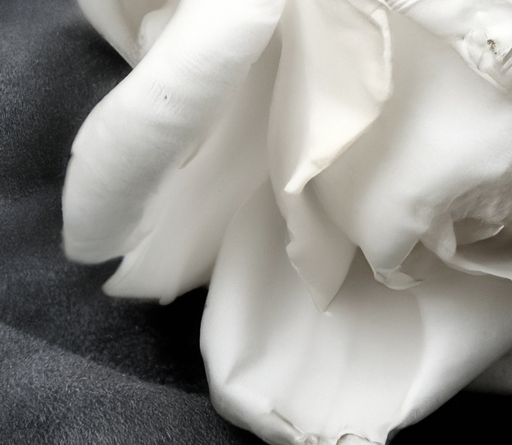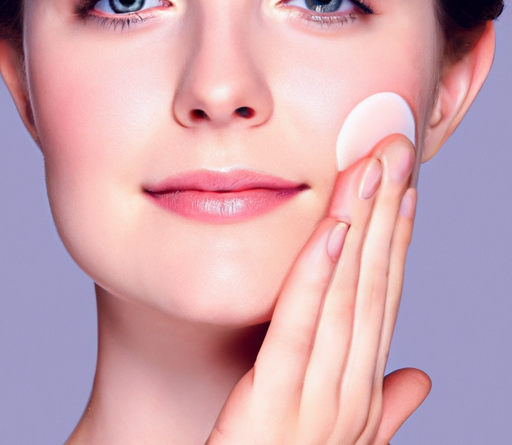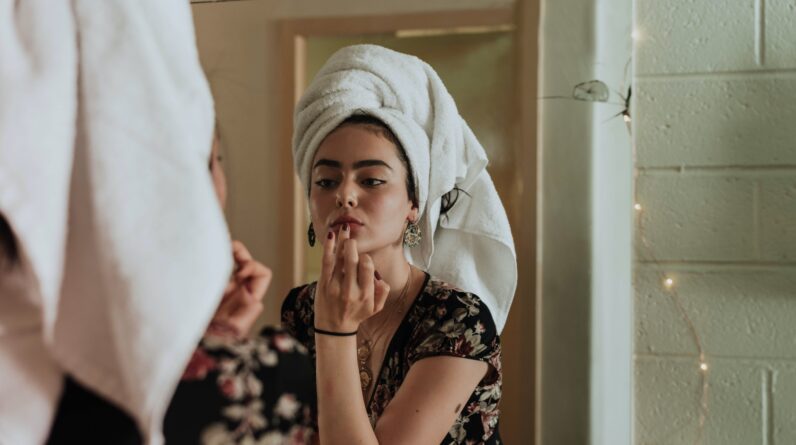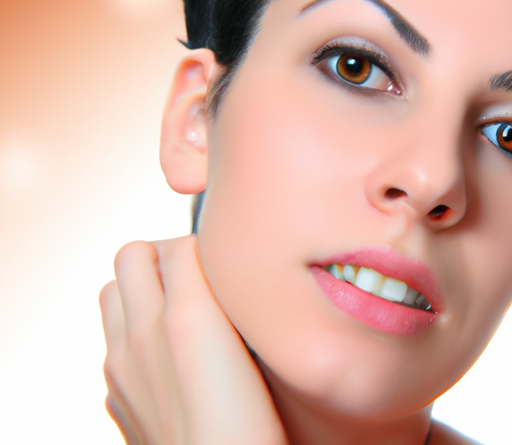So, you’ve been on a never-ending quest to find the perfect skin care routine, but the endless options out there are overwhelming. Well, look no further because we have the answer to your skincare prayers! Introducing the “Best Routine For Skin Care?” – a revolutionary product that will transform your skin and leave you wondering why you didn’t discover it sooner. This innovative routine is designed to address all your skin concerns, from acne to aging, and everything in between. Say goodbye to trial and error and say hello to flawless, radiant skin with the “Best Routine For Skin Care?”

This image is property of images.unsplash.com.
1. Understanding Your Skin Type
1.1 Dry Skin
Dry skin is characterized by a lack of natural oils and moisture, leading to a tight and sometimes flaky complexion. If you have dry skin, you may experience a dull appearance and a tendency to develop fine lines and wrinkles. It’s important to choose skincare products that provide hydration and lock in moisture to combat dryness.
1.2 Oily Skin
On the opposite end of the spectrum, oily skin produces an excess amount of sebum, leading to a shiny and greasy complexion. Those with oily skin often struggle with enlarged pores, acne breakouts, and a lack of longevity in makeup. Finding oil-free or mattifying skincare products can help control oil production and maintain a more balanced complexion.
1.3 Combination Skin
Combination skin is characterized by having both dry and oily areas on the face. Typically, the T-zone (forehead, nose, and chin) tends to be oily, while the cheeks and temples are drier. To care for combination skin, it’s important to find a balance between hydrating dry areas and controlling oiliness in the T-zone.
1.4 Normal Skin
Considered the ideal skin type, normal skin is well-balanced, with an even texture and no significant concerns. If you’re fortunate to have normal skin, your main goal should be to maintain its overall health and prevent any potential issues from arising.
2. Cleansing & Toning
2.1 Importance of Cleansing
Cleansing is the foundation of any skincare routine. It helps remove dirt, oil, and impurities that accumulate on the skin throughout the day. Cleansing also prepares the skin for better absorption of other skincare products. Regardless of your skin type, finding a gentle cleanser that doesn’t strip away the skin’s natural moisture barrier is crucial.
2.2 Finding the Right Cleanser
When choosing a cleanser, take your skin type into consideration. For dry skin, opt for creamy or oil-based cleansers that provide hydration. Oily skin can benefit from foaming or gel cleansers that help control excess oil. Combination and normal skin types can typically choose a cleanser based on personal preference, as long as it effectively removes impurities without causing any irritation.
2.3 Proper Technique for Cleansing
To properly cleanse your skin, start by wetting your face with lukewarm water. Apply a small amount of cleanser to your fingertips or a cleansing brush and gently massage it onto your face in circular motions for about a minute. Rinse thoroughly with water and pat your skin dry with a clean towel.
2.4 Benefits of Toning
Toning is an often overlooked step in skincare, but it can provide numerous benefits. Toning helps balance the pH of your skin, removes any remaining traces of dirt or cleanser, and prepares the skin for better absorption of moisturizers and treatments. Additionally, toners can help tighten pores, brighten the complexion, and provide hydration, depending on the specific formulation.
2.5 Choosing the Right Toner
The right toner for you will depend on your skin type and concerns. For dry skin, look for hydrating toners with ingredients like hyaluronic acid or rose water. Oily skin can benefit from toners that contain salicylic acid or witch hazel to control oil production and minimize pores. Combination skin should opt for gentle toners that provide a balanced effect, while normal skin can generally choose a toner based on personal preference.
3. Exfoliation
3.1 Why Exfoliation is Important
Exfoliation is the process of removing dead skin cells from the surface of the skin. This step is crucial for promoting cell turnover, revealing a fresh and radiant complexion. Regular exfoliation can also help unclog pores, reduce the appearance of fine lines and wrinkles, and improve the absorption of other skincare products.
3.2 Types of Exfoliants
There are two main types of exfoliants: physical and chemical. Physical exfoliants involve using a scrub or brush to physically remove dead skin cells, while chemical exfoliants utilize acids or enzymes to dissolve the bonds between skin cells. It’s important to choose an exfoliant that is suitable for your skin type and to avoid over-exfoliating, as it can lead to skin irritation.
3.3 Frequency of Exfoliation
The frequency of exfoliation depends on your skin’s tolerance and sensitivity. Those with dry or sensitive skin should limit exfoliation to once or twice a week, while oily skin can typically handle more frequent exfoliation, such as two to three times a week. Combination and normal skin types can adjust their exfoliation routine based on personal preference and the condition of their skin.
3.4 Proper Technique for Exfoliation
When exfoliating, be gentle to avoid damaging the skin. If using a physical exfoliant, apply a small amount to damp skin and massage in gentle circular motions for about a minute. Rinse thoroughly with lukewarm water. If using a chemical exfoliant, follow the instructions on the product and allow it to remain on the skin for the recommended amount of time before rinsing.
4. Moisturizing
4.1 Importance of Moisturizing
Moisturizing is essential for all skin types, as it helps hydrate the skin, reinforce the skin’s moisture barrier, and prevent water loss. Even if you have oily skin, skipping moisturizer can actually lead to increased oil production as the skin tries to compensate for the lack of moisture. Moisturizing also helps improve the texture and elasticity of the skin, reducing the appearance of fine lines and wrinkles.
4.2 Choosing the Right Moisturizer
When selecting a moisturizer, consider your skin type and any specific concerns you may have, such as anti-aging or acne-fighting properties. For dry skin, opt for rich and nourishing moisturizers with ingredients like hyaluronic acid or shea butter. Oily skin can benefit from lightweight, oil-free moisturizers that won’t clog pores. Combination and normal skin types have more flexibility and can choose a moisturizer based on personal preference.
4.3 Proper Technique for Moisturizing
After cleansing and toning, apply a small amount of moisturizer to your fingertips and gently massage it into your skin using upward strokes. Pay extra attention to areas that tend to be drier, such as the cheeks and under the eyes. Allow the moisturizer to absorb fully before applying any makeup or SPF products.

This image is property of images.unsplash.com.
5. Sun Protection
5.1 The Importance of Sun Protection
Sun protection is crucial for maintaining healthy skin and preventing premature aging. Prolonged exposure to the sun’s harmful UV rays can lead to sunburn, hyperpigmentation, wrinkles, and even skin cancer. Incorporating a broad-spectrum sunscreen into your daily skincare routine is essential, regardless of the weather or season.
5.2 Choosing the Right Sunscreen
Look for a sunscreen with an SPF (Sun Protection Factor) of 30 or higher and broad-spectrum protection, which shields the skin from both UVA and UVB rays. Consider your skin type when selecting a sunscreen formulation. Dry skin can benefit from moisturizing sunscreens, while oily skin may prefer lightweight, oil-free options. Combination and normal skin types have more flexibility and can choose a sunscreen based on personal preference.
5.3 Proper Application of Sunscreen
Apply sunscreen generously to all exposed areas of the skin, including the face, neck, hands, and any other areas that may be exposed to the sun. Make sure to apply it at least 15-30 minutes before sun exposure to allow the product to fully absorb into the skin. Reapply every two hours or more frequently if you’re sweating or swimming.
6. Eye Care
6.1 Importance of Eye Care
The skin around the eyes is delicate and prone to showing signs of aging, such as fine lines, wrinkles, and puffiness. Incorporating an eye care routine into your skincare regimen is essential for maintaining youthful and refreshed-looking eyes.
6.2 Choosing the Right Eye Cream
When choosing an eye cream, consider your specific eye concerns, such as dark circles, fine lines, or puffiness. Look for ingredients like caffeine or peptides, which can help reduce puffiness and promote circulation. Retinol or hyaluronic acid can help address fine lines and wrinkles. Opt for a lightweight formula that is easily absorbed by the delicate skin around the eyes.
6.3 Proper Technique for Eye Cream Application
Using the ring finger, which applies the least amount of pressure, gently dab a small amount of eye cream around the orbital bone, starting from the inner corner of the eye and moving towards the outer corner. Avoid applying the cream too close to the lash line to prevent product from seeping into the eyes. Gently pat the eye cream into the skin until fully absorbed.
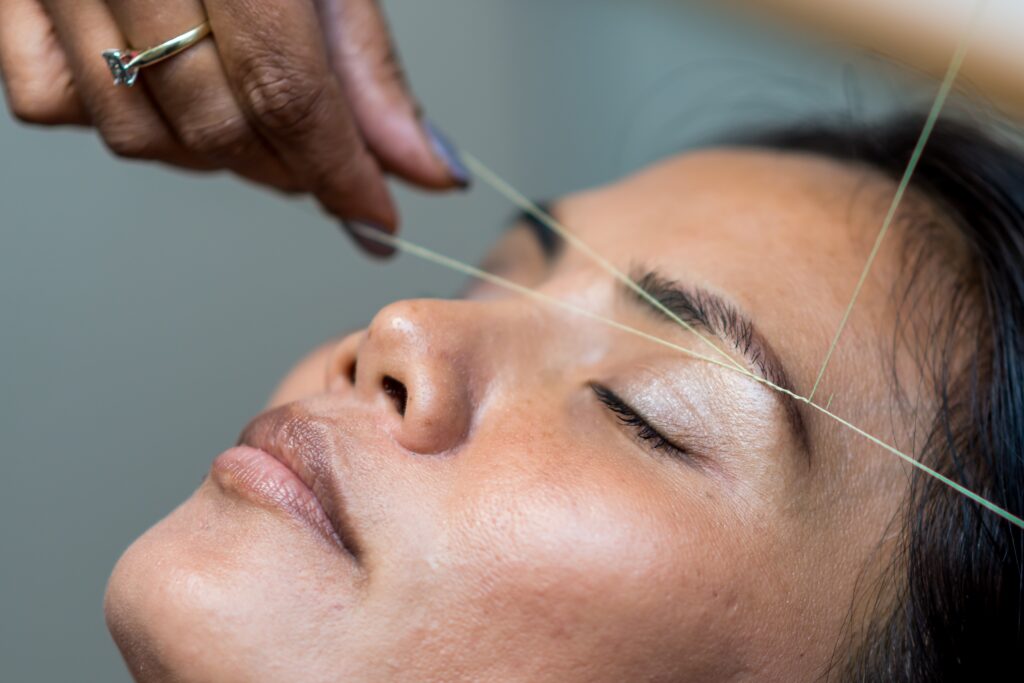
This image is property of images.unsplash.com.
7. Targeted Treatments
7.1 Identifying Skin Concerns
Identifying your specific skin concerns is crucial for choosing the right treatments. Common concerns include acne, hyperpigmentation, fine lines, and dullness. Once you’ve identified your concerns, you can choose targeted treatments that address those specific issues.
7.2 Finding the Right Treatments
There are various targeted treatments available, such as serums, masks, and spot treatments. Look for ingredients that are effective for your specific concern. For acne-prone skin, ingredients like salicylic acid or benzoyl peroxide can be beneficial. Vitamin C or niacinamide can help with hyperpigmentation, while retinol is effective for reducing fine lines and improving overall skin texture.
7.3 Incorporating Treatments into Your Routine
Incorporate targeted treatments into your skincare routine by applying them after cleansing and toning, but before moisturizing and applying sunscreen. Follow the instructions provided by the product manufacturer to ensure proper usage. Start slowly, using treatments a few times a week and gradually increase frequency if your skin tolerates it well.
8. Hydration from Within
8.1 Importance of Hydration
Hydrating the skin from within is just as crucial as external skincare. Proper hydration helps maintain the water balance in the body, promotes overall skin health, and prevents dryness and dullness. It also aids in the elimination of toxins, which can contribute to various skin issues.
8.2 Drinking Sufficient Water
Make sure to drink an adequate amount of water throughout the day to stay hydrated. The recommended daily intake varies depending on factors such as age, weight, and activity level, but a general guideline is to drink at least 8 cups or 64 ounces of water. Carry a reusable water bottle with you to make hydration convenient and accessible.
8.3 Eating Water-Rich Foods
Incorporating water-rich foods into your diet can also contribute to hydration. Fruits and vegetables with high water content, such as watermelon, cucumber, strawberries, and lettuce, can provide hydration and nourishment for your skin. Soups, broths, and herbal teas can also be hydrating alternatives.

9. Lifestyle Factors
9.1 Importance of a Healthy Lifestyle
In addition to a proper skincare routine, maintaining a healthy lifestyle can significantly impact the condition of your skin. Lifestyle factors such as sleep quality, stress management, balanced diet, and regular exercise all play a role in achieving and maintaining healthy, radiant skin.
9.2 Sleep Quality
Getting sufficient sleep is essential for skin regeneration and repair. Aim for 7-9 hours of quality sleep each night. Establish a bedtime routine that promotes relaxation and try to maintain a consistent sleep schedule. Avoid electronic devices and stimulating activities close to bedtime to enhance sleep quality.
9.3 Stress Management
Chronic stress can contribute to various skin issues, including acne breakouts, premature aging, and dull complexion. Implement stress management techniques into your daily routine, such as mindfulness meditation, deep breathing exercises, or engaging in hobbies that bring joy and relaxation.
9.4 Balanced Diet
A well-balanced diet rich in vitamins, minerals, and antioxidants can nourish your skin from the inside out. Include a variety of fruits, vegetables, lean proteins, whole grains, and healthy fats in your meals. Avoid excessive intake of processed foods, sugary treats, and greasy fast food, as they can negatively impact your skin health.
9.5 Regular Exercise
Exercise not only benefits your overall health but also improves blood circulation, which helps deliver oxygen and nutrients to the skin. Engage in regular physical activity, such as jogging, yoga, or strength training, to enhance skin health and promote a radiant complexion. Remember to cleanse your skin before and after exercise to remove sweat and impurities.
10. Consistency & Patience
10.1 The Key to Effective Skincare
Consistency is key when it comes to an effective skincare routine. Stick to your chosen products and the recommended usage guidelines to give your skin time to adapt and effectively respond to the treatments. It’s important to remember that skincare results take time and patience.
10.2 Establishing a Routine
Establish a skincare routine that suits your lifestyle and commit to it. Consistently follow the steps of cleansing, toning, exfoliating, moisturizing, applying sunscreen, and incorporating targeted treatments. Adapting a routine can be beneficial for maintaining the health and appearance of your skin.
10.3 Allowing Time for Results
Results may not happen overnight, and it’s important to be patient with your skincare journey. It can take weeks or even months to see noticeable improvements in your skin. Stay consistent, take progress photos, and be gentle with yourself throughout the process. Trust that your efforts will eventually pay off, and consult a dermatologist if you have particular concerns or if you’re not seeing the desired results.
Remember, your skin is unique, and finding the best skincare routine may require some trial and error. Be attentive to your skin’s needs and adapt your routine accordingly. By understanding your skin type, properly cleansing and toning, exfoliating, moisturizing, protecting from the sun, caring for the delicate eye area, incorporating targeted treatments, maintaining hydration from within, considering lifestyle factors, and maintaining consistency and patience, you can establish a comprehensive skincare routine that promotes healthy and radiant skin.



